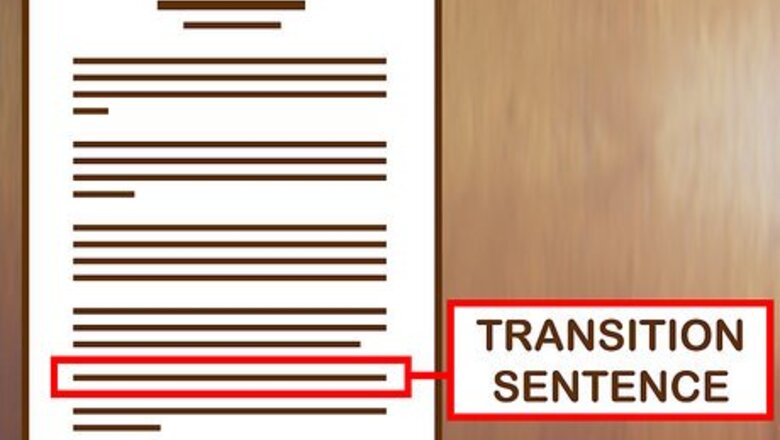
views
- For an essay, start with a transition sentence that references the original question, avoiding phrases like "in conclusion."
- Go beyond a simple summary, exploring how every point in your essay connects and the significance of your essay question.
- In a presentation, indicate that you’re finishing up and return to the initial question, giving a summary with enthusiasm and conviction.
Writing a Conclusion for an Essay or Paper
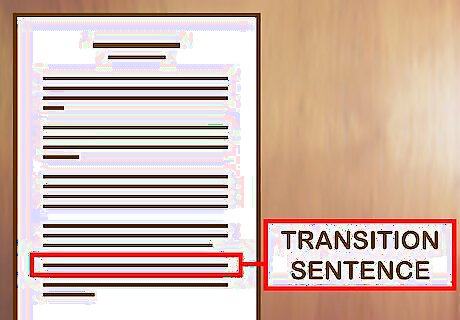
Start with a transition sentence. If you are writing a conclusion to an essay or paper for school or college, it's important to understand the functions of the conclusion. Your conclusion shouldn't only restate the main points of your argument in a way that is disconnected from the rest of the text. It should flow fluently and be written in such a way that your readers expect you to conclude when you do. To help you achieve this fluency, you should start with a sentence that links the conclusion to the main body of the text. This might be a statement that reflects the content of your essay but connects your essay to the wider points that your conclusion will then go on to briefly discuss. The sentence "A sense of the impermanence of human achievement permeates this poem", indicates a transition to the conclusion by articulating the key argument in one sentence.
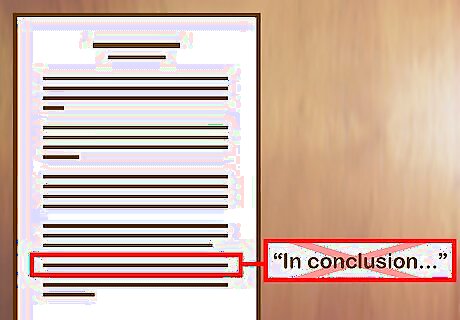
Avoid saying "in conclusion". If you are concluding an essay or research paper, you should try to avoid using phrases such as "in conclusion" or "to conclude" at the start of your conclusion. These phrases are overused and an unimaginative way to begin a conclusion. You should be able to indicate that you are beginning the conclusion in a way that does not break the flow of the text so sharply.
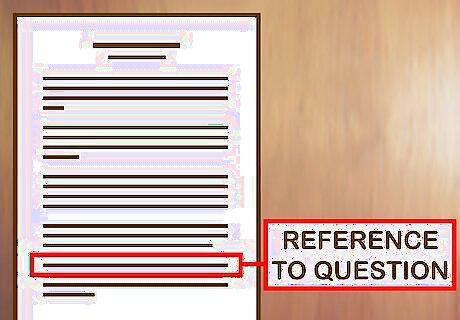
Consider starting with a reference to the original question. One way to begin your conclusion is to make a reference to the essay question or something you outlined in your introduction. If there is a phrase or quote that is especially relevant, recalling this in the conclusion can help you indicate that your essay is a complete a coherent argument. Echoing a key image or idea from the introduction is a good way to do this. For example, what if the essay question asks you "to what extent did the Battle of Monte Casino change the course of the Second World War"? Here, you could begin with a sentence such as "The Battle of Monte Casino was a crucial moment that reflected the shifting dynamic of WWII, but did not in itself turn the tide of the war".
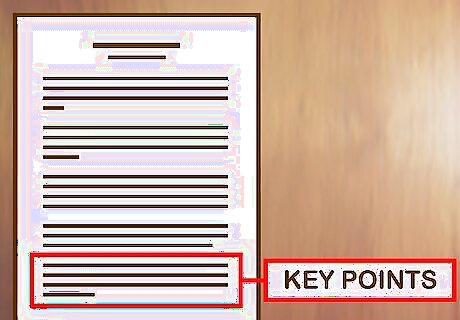
Go beyond summing up. While your conclusion can be a useful place to briefly summarise the key points of your argument, you should try to go beyond this — after all, this is your last chance to prove your point. It's important to show that your essay is coherent and all of your points connect together.You can demonstrate this in your conclusion. Instead of just going through each point one by one, try to summarise your argument in a way that highlights how the various strands of your argument are interconnected. A short summary can be useful in a longer essay, but do not simply restate what you have said in the same terms. Rather, indicate your key points while situating them within a larger context, which displays a deeper understanding and potentially opens up new lines of inquiry.
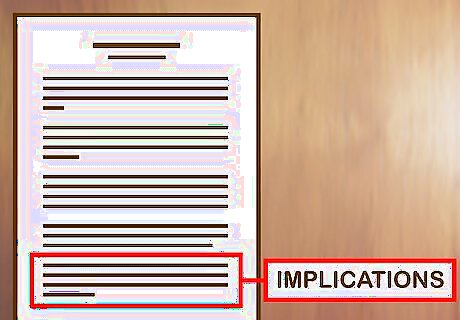
Suggest some broader implications. Conclusions can perform a number of functions in an essay or paper. A good conclusion can emphasise the importance of your argument and its particular relevance, as well as the significance of your unique findings or results. Add some relevant specific additions that you want to make that you haven't been able to fit in the rest of the essay. At can also go beyond this and suggest how your essay has broader potential implications and applications than this one piece of work. In your conclusion structure, this discussion of the broader implications should follow the transition sentences and the explanation of how the different elements of your argument fit together. This could include universalizing the topic of essay, making a connection to a contemporary issue, or providing a call to action.
Concluding a Presentation or Speech
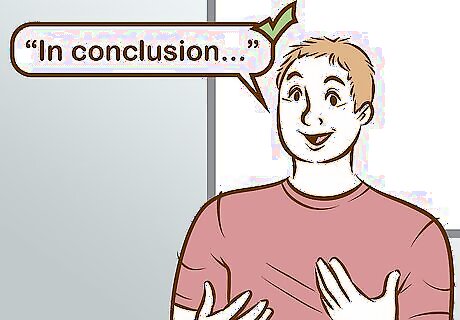
Indicate that you are concluding. Although there are many similarities in the techniques for concluding an essay and a presentation there are some important differences too. Because a presentation is delivered orally rather than read, it may not always be so clear when you are beginning the conclusion. For this reason, it is advisable to clearly indicate when you are starting your conclusion. Phrases such as "in conclusion", and "to summarise", which you wouldn't use in a written essay, can be useful for a spoken presentation. Indicating that you are about to conclude will encourage your listeners to focus on what you are about to say.
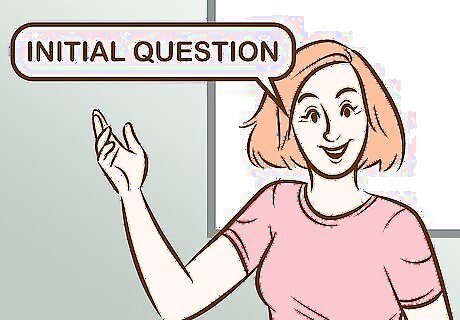
Return to your initial question. Once you get your audience's attention for your conclusion you should demonstrate how your presentation has travelled full circle by returning to the initial question or problem you set out to tackle in your introduction. Doing this will help you present a coherent and comprehensive argument. You can attempt to do this using similar techniques as an essay conclusion, by returning to an explicit question you set yourself, or returning to a key phrase or quote you established early in the presentation. For example, you could ask yourself the main question at the start of the conclusion. "So, how do I suggest we improve our sales in the Mid-West?" before going on provide a summary of your key points.
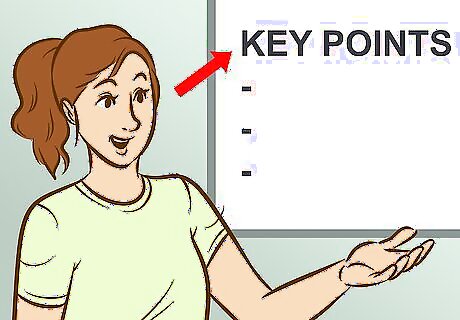
Provide a clear summary. In an oral presentation a clear summary of the key point in your talk can be a very important element of your conclusion. It is possible that your audience's attention will have drifted a little while you were talking and a brief summary can reinforce your argument. Generally, listening to a presentation will be more passive than reading an essay, so it is more beneficial to summarise your key points in the conclusion of a spoken presentation. The last things your audience hear will most likely be what they take away with them, so be sure all your key points are covered in the conclusion.
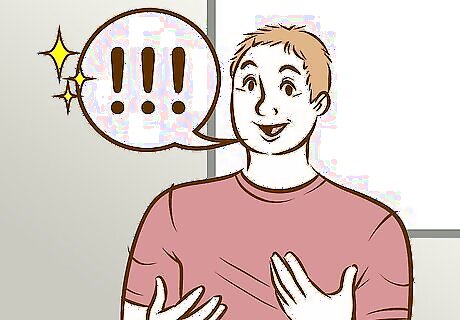
Show enthusiasm and conviction. When you conclude a presentation, it is essential that you finish with conviction and enthusiasm that leaves a lasting impression with your audience. There are a number of ways to do this, such as using to-the-point phrases, memorable and meaningful soundbites, and making strong eye contact with your audience. You might also include a short anecdote that supports your argument and acts as a call to action to the other people in the room. A strong ending can make a personal connection with the audience, by demonstrating how you can resolve a problem for the audience member.
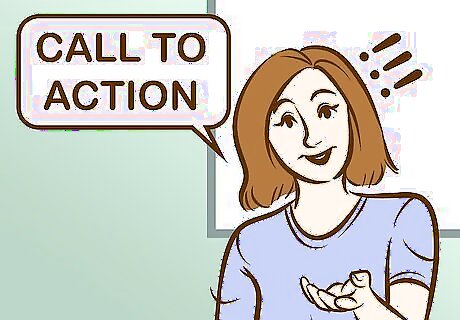
Finish strongly. When you are signing off you should try to make a lasting impression and engage you audience in the topic of your presentation. This can be achieved with a strong call to action. A call to action encourages your audience to actively respond to you and your ideas, while also demonstrating the relevance of your talk for members of the audience. Using an action verb in your final sentence can highlight exactly how you want your audience to respond. For example, when John F. Kennedy said, "Ask not what your country can do for you, ask what you can do or your country," he was encouraging action from the audience. Finishing this way both demonstrates your personal conviction and indicates that you think your ideas should be followed up.











Comments
0 comment